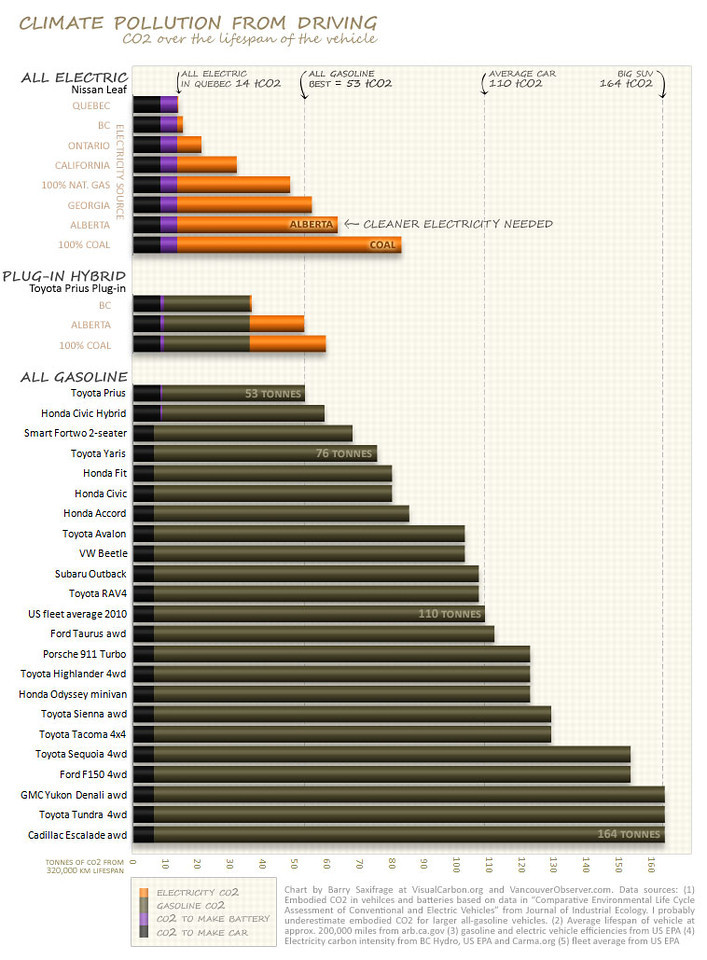A highly technical well-to-wheels analysis titled "Contribution of Li-Ion Batteries to the Environmental Impact of Electric
Vehicles" was published in Environmental Science and Technology in 2010 (http://pubs.acs.org/doi/pdf/10.1021/es903729a" onclick="window.open(this.href);return false . Bottom line of that study was that even with high fossil fuel (>50%) electricity mixes, just the operation of an internal combustion engine vehicle causes impacts as high as the TOTAL environmental impacts of electric vehicles (EV). Change the grid mix and the equation only benefits EVs more.
. Bottom line of that study was that even with high fossil fuel (>50%) electricity mixes, just the operation of an internal combustion engine vehicle causes impacts as high as the TOTAL environmental impacts of electric vehicles (EV). Change the grid mix and the equation only benefits EVs more.
Vehicles" was published in Environmental Science and Technology in 2010 (http://pubs.acs.org/doi/pdf/10.1021/es903729a" onclick="window.open(this.href);return false




